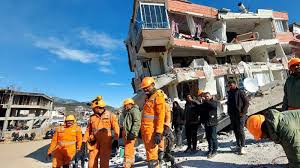Tracking the Tremors: Understanding Iran’s 2025 Earthquake Impact and Response
Introduction
Iran experienced a powerful seismic event on June 20, 2025, that rattled communities across its western provinces. Beyond the immediate shaking, the quake’s aftershocks and cascading effects have underscored the need for robust monitoring systems, rapid response efforts, and resilient infrastructure. In this article, we’ll explore what made this earthquake significant, how authorities and international partners responded, and what lessons can guide future preparedness.

Iran 2025 Earthquake Tracker
Why This Quake Mattered
The June 20 tremor registered a magnitude of 6.8 on the Richter scale, striking near a densely populated area and triggering a series of aftershocks that reached magnitudes above 5.0. Key factors that amplified its impact include:
- Geological Setting: Iran sits atop the collision zone between the Arabian and Eurasian tectonic plates, making it one of the world’s most earthquake-prone regions.
- Time of Occurrence: The quake struck just after midnight local time, catching many residents asleep and slowing initial evacuation efforts.
- Building Standards: While major cities have adopted stricter seismic codes in recent decades, many rural structures remain vulnerable, leading to disproportionate damage outside urban centers.
Real‑World Example: Lessons from History
In 2003, the Bam earthquake (magnitude 6.6) claimed over 26,000 lives and devastated the city. Since then, Iran has invested heavily in seismic monitoring and retrofitting critical buildings—but as the latest event shows, gaps remain in rural compliance and community awareness.
How the Earthquake Tracker Worked
Iran’s national seismological center, in collaboration with international monitoring networks, deployed a real‑time earthquake tracker accessible online and via mobile apps. This system allowed:
- Instant Alerts: Notifications sent within seconds to government agencies and the public.
- Aftershock Forecasting: Probabilistic models predicting likely aftershock zones and magnitudes.
- Data Sharing: Seamless data exchange with global centers, enhancing the precision of epicenter and depth calculations.
Response and Rescue Efforts
Within hours of the first tremor, teams mobilized from Tehran, Kermanshah, and neighboring provinces. Key actions included:
- Establishing emergency field hospitals in towns like Sarpol-e Zahab and Khosrowabad
- Deploying urban search-and-rescue (USAR) dogs and heavy-lift helicopters for trapped survivors
- Coordinating with Red Crescent volunteers for rapid distribution of food, water, and blankets

Community‑Led Initiatives
Local residents often serve as first responders. In the village of Miskin, villagers formed human chains to dig through collapsed adobe homes, saving dozens before official teams arrived. This highlights that:
- Training and Drills at the community level can drastically reduce casualties.
- Early Warning Systems—even simple sirens—can buy critical seconds for people to move to safer spots.
Strategies for Future Preparedness
To turn lessons into action, experts recommend:
- Upgrading Rural Housing: Subsidies or microloans to retrofit or rebuild homes with seismic‑resistant techniques.
- Expanding Sensor Networks: Adding low‑cost accelerometers in remote areas to improve aftershock maps.
- Public Education Campaigns: School curricula and radio programs teaching “Drop, Cover, and Hold On” drills.
- Cross‑Border Collaboration: Iran borders several seismic neighbors; data-sharing pacts can save lives region‑wide.
Key Takeaways
- A robust earthquake tracker—combining real‑time data, modeling, and mobile alerts—proved invaluable.
- Rural and urban vulnerabilities differ; tailored policies are needed for each.
- Community engagement and simple drills are as vital as high‑tech solutions.
Conclusion
The June 20, 2025 quake was a stark reminder that seismic activity remains one of Iran’s greatest natural threats. While modern monitoring and rapid response efforts helped mitigate the worst outcomes, continued investment in infrastructure, public education, and international cooperation will be essential to safeguard lives and livelihoods in years to come.